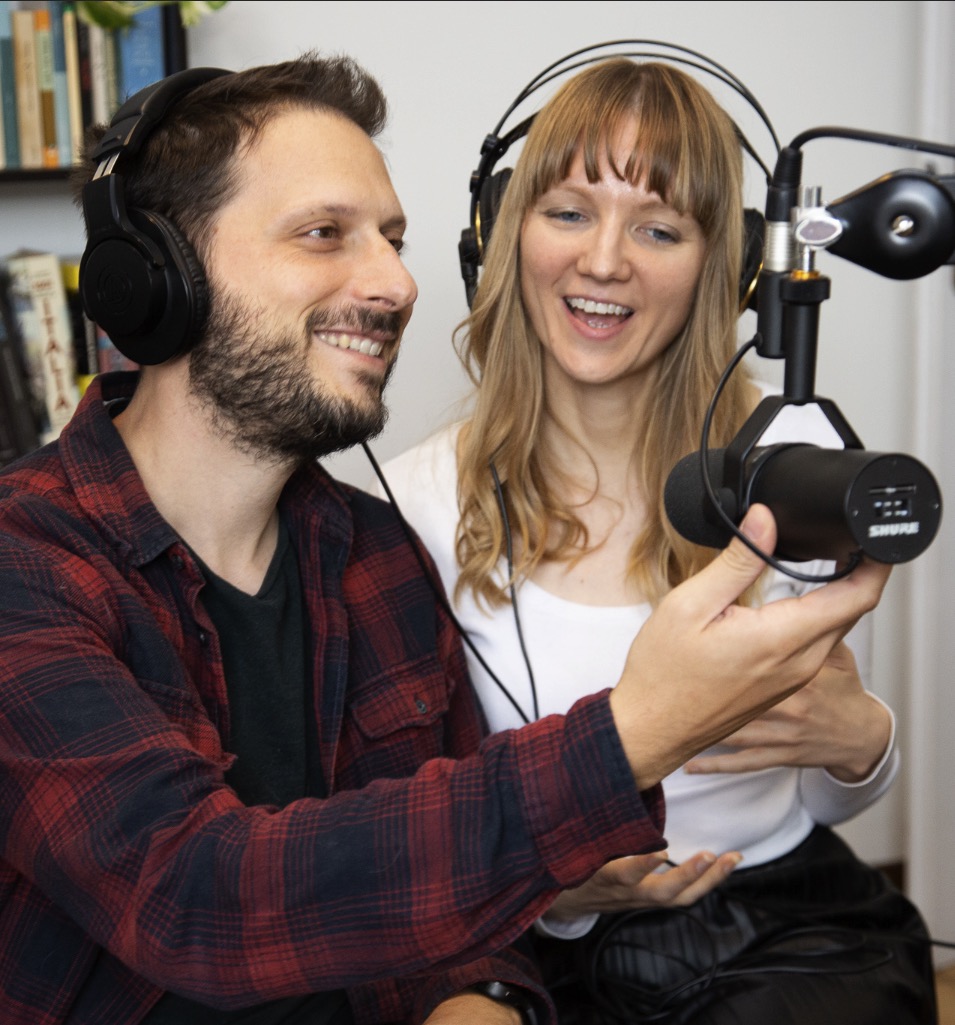What's the difference between "da" and "per"? In English, they can both translate as "for", but they're not interchangeable in Italian. Find out more in episode 68 of 5 minute Italian.
Become a 5-minute Italian member (it's free!)
Learn to speak and understand Italian faster by joining the 5 minute Italian club! When you sign up, you'll get:
- Mini Italian lessons + bonus materials delivered to your inbox.
- Access to the private Facebook group where you can practice chatting in Italian.
- Invites to free speaking workshops.
If you'd like to join us, click here to become a member of 5 Minute Italian.
Today's Italian Vocabulary
Da quanto tempo = how long
Da quanto tempo studi l'italiano? = how long have you been studying Italian for?
Da = since
Quanto = how much
Tempo = time
Studi = you study
l'italiano = the italian
Studio l'italiano da due anni = I've been studying Italian for two years
Studio = I study
L'italiano = the Italian
Da = since
Due = 2
Anni = years.
Studio l'italiano da due anni = I've been studying Italian for two years
Ho studiato l'italiano per due anni = I studied Italian for two years (but I don't anymore).
Aspetto da 10 minuti = I've been waiting for 10 minutes
Ho aspettato per 10 minuti = I waited for 10 minutes (but I'm not waiting anymore).
Take the quiz
How much did you learn? Find out in the 5-minute Italian quiz!
Click here to take the quiz for this episode: DA vs PER: What's the difference?
Flashcards
Remember the vocabulary from your 5 Minute Italian lessons by downloading the digital flashcard pack.
- Download the flashcards: DA vs. PER: What's the difference?
- Not sure how it works? Click here to watch the tutorial
Transcript
Please note, this is not a word for word transcript.
Katie: Ciao a tutti e benvenuti a 5 Minute Italian. I’m Katie
Matteo: And I’m Matteo, ciao!
K: And in today’s lesson, we’re going to continue talking about "how long". in the sense of "how long you've been doing something", or "how long you did something for". This week, we're looking at the difference between "DA" and "PER".
Let's start with the question "how long have you been learning Italian?" This is an important phrase to learn, because when you get into conversations with Italians, one thing they'll likely ask you is "how long have you been learning Italian?". How would you say that in Italian?
M: If you listened to last week's lesson, you'll know that to ask this question, we start with "DA".
K: Which is like saying "for" or "since". To ask "how long", Italians literally say "since how much time".
M: Da quanto tempo.
Da = since
Quanto = how much
Tempo = time
K: So now we have our "how long" = da quanto tempo. To say "have you been studying", it's actually much simpler in Italian than in English.
M: Italians use the present. They say "since - how long - you - study - Italian".
K: We know that how long is "da quanto tempo", so how would you say "you study Italian"?
M: Studi l'italiano. Da quanto tempo studi l'italiano.
K: So let's take that sentence again:
M:
Da = since
Quanto = how much
Tempo = time
Studi = you study
l'italiano = the italian
K: And to answer, how would you say "I've been studying Italian for two years". Remember, in Italian, we just use the present tense, plus DA and the time period. Literally: "I study Italian since two years".
M: Studio l'italiano da due anni
Studio = I study
L'italiano = the Italian
Da = since
Due = 2
Anni = years.
M: Now, I have a question for you: what's the difference between these two sentences?
Studio - l'italiano - DA - due anni.
And
Ho - studiato - l'italiano - PER - due - anni.
K: In the first sentence, we've got the present tense - studio l'italiano (I study Italian). Then we have DA, followed by the time period, due anni (two years). In the second sentence, we've got the past tense - ho studiato l'italiano (I studied Italian). Then PER followed by the same time period, due anni (two years).
I'll give you a clue. In one of these sentences, you studied Italian for two years at some point in the past, but you don't anymore. In the other sentence, we're talking about something that you are still doing, so you started studying Italian two years ago, and you're still learning now.
M: Can you guess which one is which?
K: In the first sentence, the use of DA, shows us that you are still studying Italian. So this structure: present tense, plus da, plus the time period - studio l'italiano da due anni, shows us that you are still doing it. In the second sentence: past tense, plus per, plus the time period: ho studiato l'italiano per due anni, shows us that you did something for two years in the past, but now it's finished. Let's practice with another example. What's the difference between these two sentences:
M:
Aspetto - DA - 10 - minuti
Ho - aspettato - PER - 10 - minuti
K: So in the first sentence we have:
M:
Aspetto = I wait
DA = since
10 minuti = ten minutes
K: Am I still waiting, or is the waiting finished? The present tense "aspetto" (I wait) plus DA, means that the action is still happening. I've been waiting for 10 minutes and I'm still waiting. Aspetto DA 10 minuti.
The other sentence was:
M:
Ho = I have
Aspettato = waited
PER = for
10 minuti = 10 minutes.
K: Here we have the past tense "ho aspettato" (I waited) plus "per", which means that the action happened in the past. I waited for 10 minutes, but I'm not waiting anymore.
That’s it for today’s episode, remember that you can see all of these words and sentences written down by going to joyoflanguages.com/italianpodcast and scrolling down to episode 68. You'll also get bonus materials like flashcards and a quiz to help you remember what you learnt. You can also practice chatting with us in Italian in our Facebook group, by going to facebook.com/groups/5.minute.italian. You'll also find the link in the show notes.
Ciao for now, see you next time or as we say in Italian,
M: Alla prossima!
Get more 5-minute Italian
To get more 5 minute Italian, including lessons delivered to your inbox, access to the private Facebook group and invites to speaking workshops, click here to become a 5 Minute Italian member.

